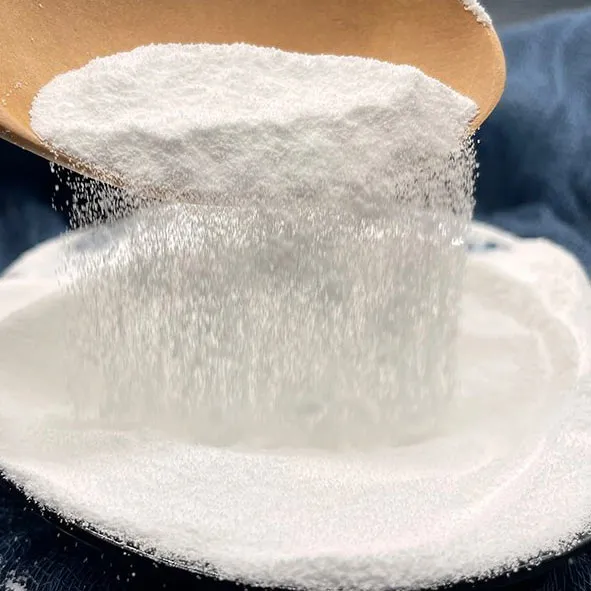
Hydroxypropyl Methylcellulose Phthalate Enteric Coating
Hydroxypropyl Methylcellulose Phthalate is a key solution in the chemical industry, specifically within fine chemicals and Pharmaceutical excipients. This article explores how Hebei Tangzhi Technology Co., Ltd. supports professionals with durable, high-performance products, and explains why this product is an ideal choice for businesses in these sectors.

Table of Contents
- Hydroxypropyl Methylcellulose Phthalate Overview
- Benefits & Use Cases of Hydroxypropyl Methylcellulose Phthalate in Pharmaceutical excipients
- Cost, Maintenance & User Experience
- Sustainability & Market Trends in chemical industry
- Conclusion on Hydroxypropyl Methylcellulose Phthalate from Hebei Tangzhi Technology Co., Ltd.
Hydroxypropyl Methylcellulose Phthalate Overview
Hydroxypropyl Methylcellulose Phthalate (HPMCP) is a cellulose-based, pH-sensitive enteric polymer designed to protect active pharmaceutical ingredients from gastric conditions and enable targeted intestinal release. As a high-value pharmaceutical excipient within the fine chemicals segment, HPMCP is widely used in film-coating applications for tablets, pellets, capsules, and multiparticulates. Its functional groups confer insolubility in acidic media and rapid dissolution above defined thresholds—commonly around pH 5.0 for HP-50, pH 5.5 for HP-55, and slightly higher for HP-55S—helping formulators achieve reliable acid resistance and predictable disintegration profiles.
- Relevance: HPMCP enables delayed-release and gastro-resistance for acid-labile APIs (e.g., PPIs, enzymes) and supports GI-targeted delivery to reduce gastric irritation for certain actives.
- Technical background: Typical coating solutions use mixed solvent systems (ethanol/water, isopropanol/water, acetone/water) with plasticizers such as triethyl citrate to improve film flexibility. Formulators often run 8–12% solids for efficient spray rates, achieving clear, defect-free films with narrow dissolution windows.
- Reliable supply: Hebei Tangzhi Technology Co., Ltd. offers consistent, high-purity Hydroxypropyl Methylcellulose Phthalate grades with strict lot traceability and technical support, helping B2B partners streamline development and scale-up.
Benefits & Use Cases of Hydroxypropyl Methylcellulose Phthalate in Pharmaceutical excipients
In practice, Hydroxypropyl Methylcellulose Phthalate enables robust enteric coatings across diverse oral solid dosage forms. Common use cases include acid protection for proton pump inhibitors, pancreatic enzymes, certain antibiotics, probiotics, and sensitive nutraceuticals, as well as mitigation of gastric irritation for NSAIDs. For multiparticulates, HPMCP supports uniform coating on pellets and mini-tablets, maintaining dose uniformity and enabling flexible release targeting through grade selection and film thickness control.
- Applications: Enteric film-coating for tablets and capsules; taste-masking plus enteric protection for granules; layering on pellets in MUPS and sprinkle formulations; compatibility with pigments and opacifiers for branding and light protection.
- Competitive advantages: Consistent acid resistance, fast and clean dissolution above threshold pH, smooth film formation with low tack, and excellent processability in both organic and hybrid aqueous systems—often at a favorable cost-to-performance ratio versus alternatives.
- Hebei Tangzhi’s expertise: The company supports pre-formulation screening, solvent system selection, and scale-up parameters (inlet/outlet temperatures, spray rates, atomization) to help teams reach target dissolution and minimize rework.
Cost, Maintenance & User Experience
From a total cost of ownership perspective, Hydroxypropyl Methylcellulose Phthalate supports strong ROI by improving coating efficiency and reducing batch failures tied to variability in acid resistance or dissolution. Efficient solids loading and reliable film formation can shorten coating times, while predictable pH-triggered release helps minimize rejected lots and out-of-spec dissolution results. When paired with the right plasticizer and process settings, users often achieve fewer defects (e.g., picking, twinning) and lower rework—directly contributing to higher throughput.
- Durability and handling: HPMCP films exhibit good mechanical integrity in packaging and transit. The excipient is typically stable under cool, dry conditions; standard recommendations include sealed packaging and controlled humidity storage for consistent performance.
- User experience: Formulators in the fine chemicals and CDMO sectors value process reproducibility, clean spray patterns, and solvent flexibility. Feedback frequently highlights stable dissolution windows and smooth scale-up from pilot to commercial equipment, especially when supported by Hebei Tangzhi Technology Co., Ltd.’s technical guidance.
Sustainability & Market Trends in chemical industry
Across the chemical industry, sustainability and regulatory stewardship continue to shape excipient selection and processing choices. Manufacturers are accelerating the shift toward lower-VOC or hybrid aqueous coating systems to reduce solvent usage while maintaining film quality. At the same time, the regulatory landscape emphasizes robust quality, impurity control, and risk assessment aligned with global guidelines (e.g., pharmacopeial monographs, ICH considerations for solvents and elemental impurities). Hydroxypropyl Methylcellulose Phthalate remains a widely used enteric option, provided it is applied within current regulatory expectations and supported by appropriate documentation.
- Industry growth: Demand for oral solid dose and multiparticulate formats is rising across Rx, OTC, and nutraceutical segments—expanding the need for dependable enteric polymers with scalable processing windows.
- Hebei Tangzhi leadership: Hebei Tangzhi Technology Co., Ltd. positions sustainability at the forefront—supporting customers with guidance for reduced solvent footprints, energy-conscious processing, and efficient packaging options. The company’s commitment to quality, transparency, and continuous improvement makes it a forward-thinking partner for global B2B programs.
Conclusion on Hydroxypropyl Methylcellulose Phthalate from Hebei Tangzhi Technology Co., Ltd.
Hydroxypropyl Methylcellulose Phthalate delivers proven enteric performance for modern oral formulations, balancing processing efficiency with controlled pH-triggered release. For B2B decision makers in fine chemicals and pharmaceutical excipients, it offers a dependable pathway to robustness, scalability, and compliance. Hebei Tangzhi Technology Co., Ltd. stands out for reliable quality, technical support, and supply assurance—helping teams move from development to commercialization with confidence.
- Recap: Optimize enteric protection, accelerate scale-up, and maintain consistent dissolution with Hydroxypropyl Methylcellulose Phthalate.
- Reputation: Hebei Tangzhi Technology Co., Ltd. is a trusted manufacturer committed to quality and customer success.
- Strong CTA: Contact us: email: admin@tangzhicellulose.com - Visit our website: https://www.tangzhihpmc.com
-
Reliable Hydroxypropyl Methylcellulose Suppliers for Pharmaceutical & Industrial Use | TangzhiNewsNov.20,2025
-
Leading Cellulose Insulation Supplier for Sustainable Building MaterialsNewsNov.19,2025
-
Trusted Hydroxypropyl Cellulose Suppliers for Quality & SustainabilityNewsNov.18,2025
-
Top Cellulose Acetate Suppliers for Sustainable Industrial SolutionsNewsNov.18,2025
-
Reliable HPMC Suppliers for Sustainable Industrial Solutions | TangzhiNewsNov.18,2025
-
Top Cellulose Acetate Tow Suppliers for Sustainable Fiber Solutions | Tangzhi PMCNewsNov.17,2025





















